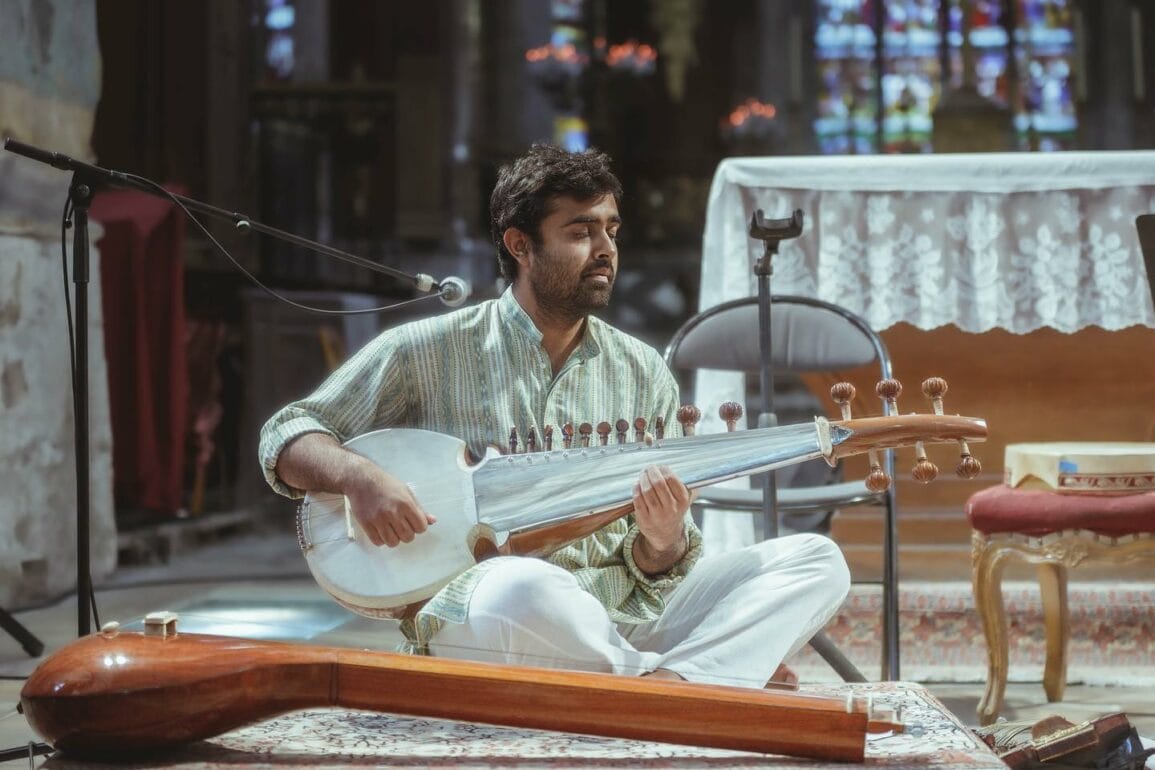The Role of Silence and Pauses in Indian Classical Music

Indian classical music is a sophisticated and deeply expressive art form, with its roots stretching back thousands of years. One of the less discussed yet profoundly impactful elements of this music is the use of silence and pauses. Silence in Indian classical music is not merely an absence of sound; it is a powerful tool that enhances the emotional depth, structural integrity, and spiritual resonance of the performance. This exploration will delve into the multifaceted role of silence and pauses in both Hindustani and Carnatic traditions, examining how they contribute to the overall aesthetic and communicative power of the music.
Enhancing Emotional Expression
Silence in Indian classical music is a potent medium for conveying emotion. It provides a space for both the musician and the listener to absorb and reflect on the preceding musical phrases. This moment of quiet can heighten the emotional impact of the music, allowing the listener to fully appreciate the nuances of the raga and the emotive intent of the performer.
- Creating Suspense and Anticipation: In a performance, strategic pauses can create a sense of suspense and anticipation. The audience is left hanging on the edge, eagerly awaiting the next note or phrase. This technique can be particularly effective during improvisational sections, where the unpredictability of the music is heightened by these moments of silence.
- Emphasizing Key Phrases: Musicians often use pauses to emphasize key phrases or motifs within a raga. By inserting a brief silence before or after an important melodic or rhythmic passage, the performer draws attention to it, making it stand out in the listener’s mind.
- Enhancing Emotional Transitions: Silence can also facilitate smoother emotional transitions within a piece. When moving from one section of a raga to another, a well-placed pause allows for a mental and emotional reset, preparing the audience for a shift in mood or intensity.
Structuring the Performance
Silence and pauses play a crucial role in the structural aspects of Indian classical music. They help delineate different sections of a performance, marking transitions and providing a clear framework within which the music unfolds.
- Alap and Jod: In the Hindustani tradition, the alap is a slow, unmetered introduction that explores the raga’s characteristics without rhythmic accompaniment. Pauses during the alap allow the musician to highlight specific notes and phrases, giving the audience time to absorb the raga’s essence. As the performance transitions to the jod, where a rhythmic pulse is introduced, brief silences can accentuate the shift from the free-flowing alap to the more structured jod.
- Kriti and Niraval: In Carnatic music, the kriti is the central composition around which improvisation occurs. During the niraval, where the musician improvises on a specific line of the kriti, pauses can serve to underline particular words or phrases, adding depth to the lyrical and melodic interpretation.
- Tala Transitions: In both Hindustani and Carnatic music, the transition between different talas (rhythmic cycles) within a performance can be marked by moments of silence. These pauses signal a change in rhythmic structure, allowing the audience to mentally prepare for the new rhythmic pattern.
Facilitating Improvisation
Improvisation is a cornerstone of Indian classical music, and silence is an essential tool for enhancing the improvisational experience.
- Breathing Space for Musicians: Improvisation demands intense concentration and creativity. Pauses provide musicians with brief moments to gather their thoughts, plan their next musical move, and ensure that their improvisation remains coherent and inspired.
- Dynamic Interaction: In performances involving multiple musicians, such as a sitar player and a tabla accompanist, pauses facilitate dynamic interaction. The lead musician might pause to give space for the tabla player to introduce a new rhythmic pattern or to respond to a previous phrase. This conversational aspect of Indian classical music is enriched by the thoughtful use of silence.
- Highlighting Rhythmic Complexity: In rhythmic improvisations, particularly in complex talas, pauses can be used to highlight intricate rhythmic patterns and syncopations. The interplay between sound and silence adds layers of complexity and excitement to the performance.
Spiritual and Meditative Dimensions
Indian classical music is not only an artistic endeavor but also a spiritual practice. Silence within this musical tradition holds a deep meditative and spiritual significance.
- Connection to Nada Brahma: In Indian philosophy, the concept of Nada Brahma (the universe is sound) underscores the spiritual nature of music. Silence is considered an integral part of this sonic universe, embodying the potential for sound. It represents the unmanifest, the space from which sound emerges and into which it returns.
- Enhancing Meditation: For both the performer and the listener, moments of silence in a performance can serve as meditative pauses. These silences allow for introspection and a deeper connection to the music’s spiritual essence. They create a space for the mind to become still, enhancing the overall meditative experience.
- Symbolizing Transcendence: In the context of Indian classical music, silence can symbolize transcendence and the dissolution of ego. It is a reminder that music, like life, is a balance of sound and silence, action and stillness. This balance is essential for achieving a state of musical and spiritual transcendence.
Conclusion
The role of silence and pauses in Indian classical music is multifaceted and profound. Far from being mere absences of sound, these moments of quiet are powerful tools that enhance emotional expression, structure the performance, facilitate improvisation, and deepen the spiritual resonance of the music. By understanding and appreciating the strategic use of silence, both performers and listeners can experience a richer, more nuanced engagement with Indian classical music. This delicate interplay between sound and silence is what gives Indian classical music its timeless beauty and enduring appeal.





